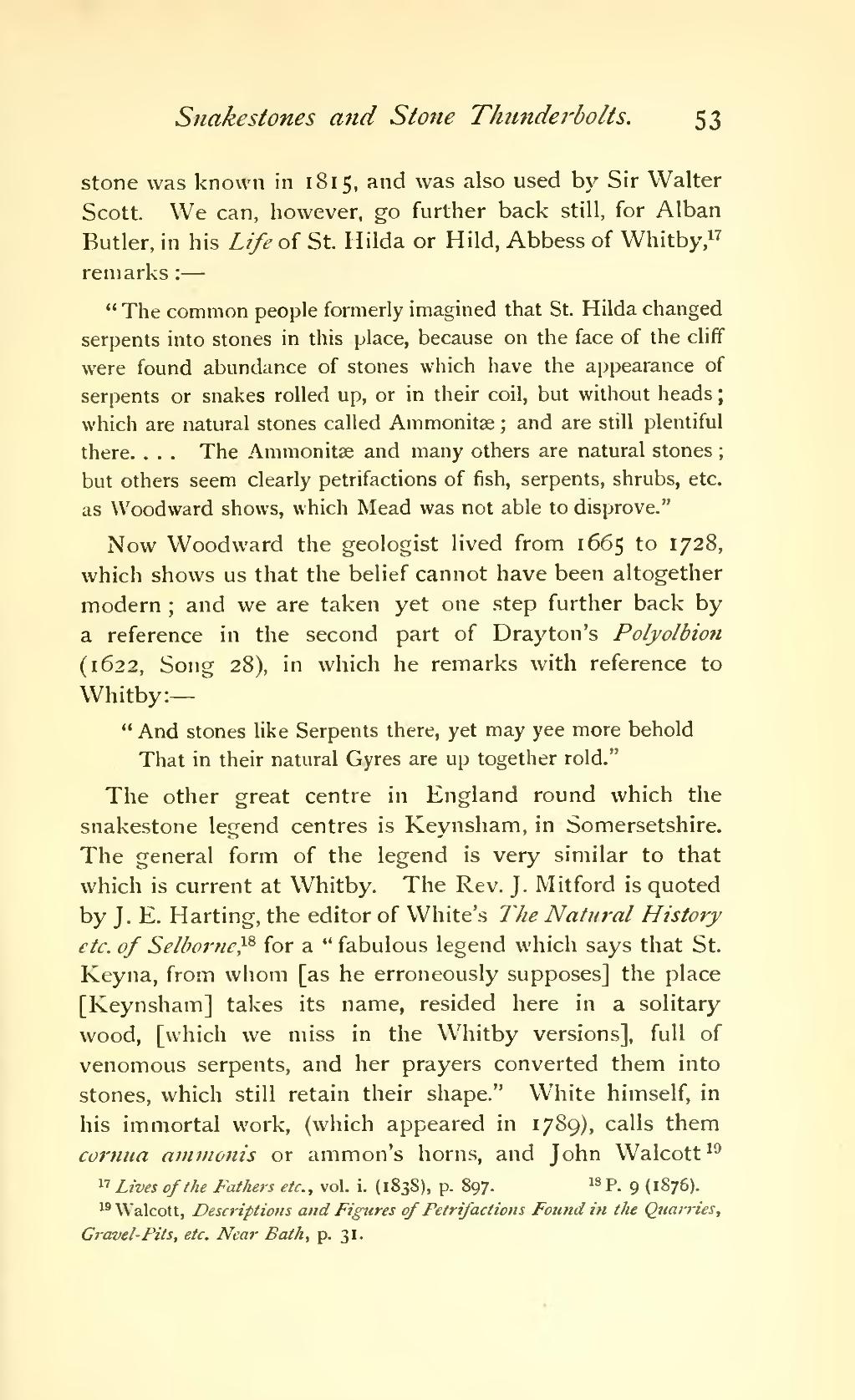stone was known in 1815, and was also used by Sir Walter Scott. We can, however, go further back still, for Alban Butler, in his Life of St. Hilda or Hild, Abbess of Whitby.[1] remarks:—
"The common people formerly imagined that St. Hilda changed serpents into stones in this place, because on the face of the cliff were found abundance of stones which have the appearance of serpents or snakes rolled up, or in their coil, but without heads; which are natural stones called Ammonitæ; and are still plentiful there. . . . The Ammonitæ and many others are natural stones; but others seem clearly petrifactions of fish, serpents, shrubs, etc. as Woodward shows, which Mead was not able to disprove."
Now Woodward the geologist lived from 1665 to 1728, which shows us that the belief cannot have been altogether modern; and we are taken yet one step further back by a reference in the second part of Drayton's Polyolbion (1622, Song 28), in which he remarks with reference to Whitby:—
"And stones like Serpents there, yet may yee more behold
That in their natural Gyres are up together rold."
The other great centre in England round which the snakestone legend centres is Keynsham, in Somersetshire. The general form of the legend is very similar to that which is current at Whitby. The Rev. J. Mitford is quoted by J. E. Harting, the editor of White's The Natural History etc. of Selborne,[2] for a "fabulous legend which says that St. Keyna, from whom [as he erroneously supposes] the place [Keynsham] takes its name, resided here in a solitary wood, [which we miss in the Whitby versions], full of venomous serpents, and her prayers converted them into stones, which still retain their shape." White himself, in his immortal work, (which appeared in 1789), calls them cornua ammonis or ammon's horns, and John Walcott[3]
